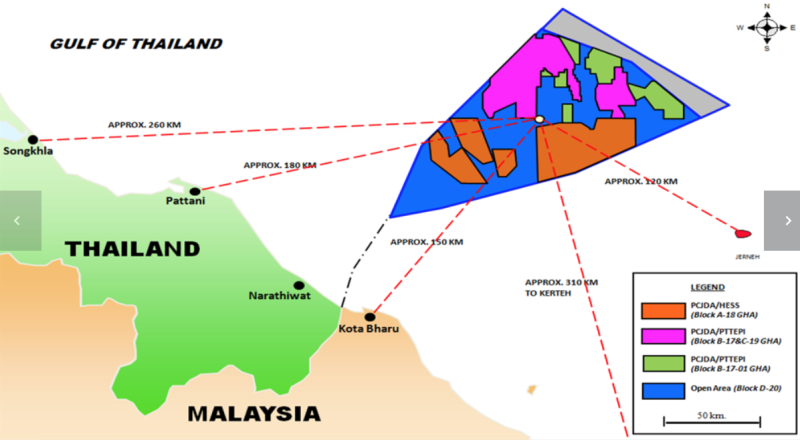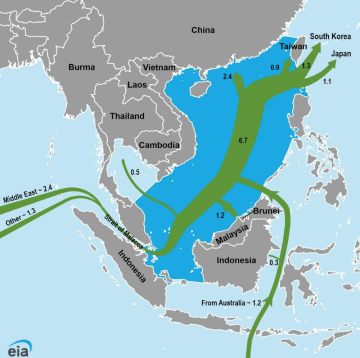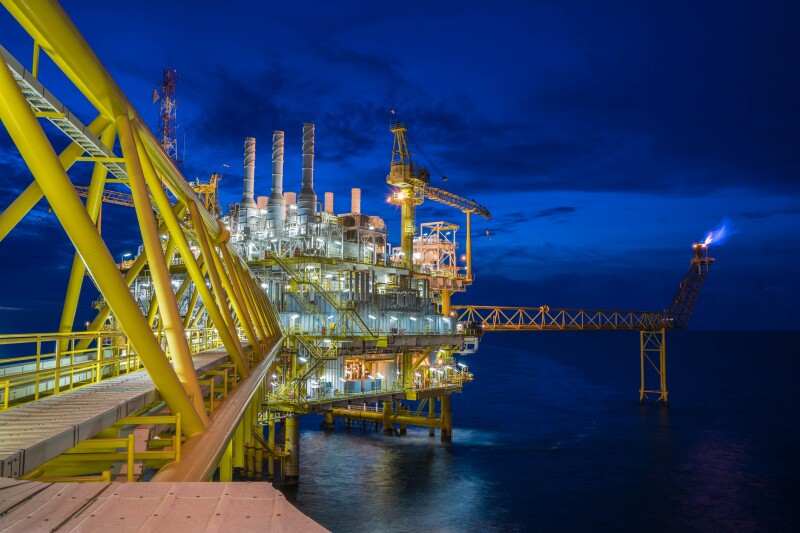Thailand’s state-owned PTT Exploration and Production (PTTEP) will spend $5.3 billion in 2025 to boost core businesses, domestic and foreign, out of a $21.2 billion, 5-year capital expenditure plan that prioritizes gas production and the building of a global LNG supply chain by 2030.
Southeast Asia’s third-largest gas producer after Indonesia and Malaysia, Thailand is reversing a gas production decline that started in 2018 when production plateaued at 3000 MMcf/D, according to WoodMac which published a report in May attributing a turnaround to “PTTEP's commitment to maintain gas production at around 1500 MMcf/D from its two key projects” in the Gulf of Thailand—G2/61 (Bongkot) and G1/61 (Erawan).
In a filing with the Stock Exchange of Thailand on 20 December, PTTEP described its 5-year investment strategy to maximize gas production from producing assets considered vital to Thailand’s energy security as well tapping into new fields and exploration acreage.
Those include (in the Gulf of Thailand), the shallow-water Erawan and Bongkot gas fields whose combined production supplies 60% of the country’s domestic gas consumption, plus other nearby fields including Arthit, S1, Contract 4, and the Malaysia–Thailand Joint Development Area (MTJDA) Projects, according to the filing signed by PTTEP’s Executive Vice President for Finance, Chanamas Sasnanand.

Targeted also for investment are the Zawtika and the Yadana projects offshore Myanmar in Gulf of Martaban which also supply Thailand’s domestic market.
Delayed Investment in Key Assets
In December 2018, PTTEP won a bid round to take over the aging Erawan and Bongkot concessions but investment to reverse the production decline that had started that year did not begin at Erawan until 2022 when details of the ownership transfer from Chevron were settled. Chevron had managed Erawan since its inception in 1981. This in turn delayed work at Bongkot to 2023 as the two fields are part of an interdependent cluster of fields.
Currently, PTTEP has a 60% operator interest in the shallow-water Erawan field with the UAE’s Mubadala Energy holding a 40% working share. In December, the Thai government approved the transfer of TotalEnergies’ 33.33% stake in Bongkot to PTTEP, giving Thailand’s state-owned champion 100% control of the field, according to Thailand’s government website.
Middle East and Africa Key to PTTEP’s Role in Global LNG
In its stock filing, PTTEP pledged to invest $1.46 million to “accelerate” development of the Ghasha concession offshore, Mozambique Area 1 Projects (pending TotalEnergies’ decision), and production startup at Malaysian greenfield projects SK405B, SK417, and SK438.
In June 2024, PTTEP announced its acquisition of a 10% stake in ADNOC’s Ghasha concession situated near offshore exploration Blocks 1, 2, and 3 where PTTEP holds a participating interest. It also participates in the Sharjah Onshore Area A Project, Sharjah Onshore Area C Project, and ADNOC Gas Processing Joint Venture.
Oman is another strategic area where PTTEP owns a 2% share in the Oman LNG project as well as a stake in Oman’s green hydrogen project, 20% in Block 61 (home to Oman’s largest gas field), a minor stake in PDO (Petroleum Development Oman) Block 53 (Mukhaizna), the Oman Observer reported this past summer.
In February 2019, PTT Public Company Ltd.’s then Vice President for Corporate Strategy Arawadee Photisaro told a news conference in Bangkok that LNG would figure in its investment strategy moving forward as she announced a 5-year, $11.3 billion commitment to boost its natural gas portfolio and energy infrastructure.
"We want to become a global LNG portfolio player ... and build an LNG value chain," Reuters quoted Photisaro as saying at the time, adding that PTTEP would acquire assets while other units would focus on building receiving terminals and liquefaction and regasification plants as gas becomes a primary energy source for Thailand.
In Africa, PTTEP signed off in December on a sales and purchase agreement leading to a 22.1% interest in Algeria’s Touat gas and condensate project which, according to WoodMac, embraces nine fields with estimated gas reserves of 2.0 Tcf. Partners there include Italy’s Eni, France’s Engie (which divested shares to PTTEP but retains a minority stake), and Algeria’s Sonatrach.
Touat would be PTTEP’s first gas asset and third interest in Algeria after the Bir Seba (35%) and Hassi Bir Rekaiz (49%) conventional oil fields. The deal is expected to close in 2Q 2025 giving PTTEP $20–30 million in profit sharing per year.
While Touat lacks a dedicated LNG facility, it supplies gas by pipeline to Sonatrach-owned LNG plants and thus is part of Algeria’s LNG export supply chain.

TotalEnergies’ Mozambique LNG Awaits US Exim Bank Trump Appointments
In another strategic LNG play, PTTEP also holds 8.5% of Area 1 in TotalEnergies’ $20 billion Mozambique LNG development which together with the nearby but separate ExxonMobil/Eni Romuva LNG project promised to create an East African LNG hub ideally placed for export to Asia.
Mozambique LNG stalled however in April 2021 when TotalEnergies declared force majeure over terrorist threats while, in contrast, the competing Romuva project began producing LNG from a floating FLNG unit, and in October 2024 awarded front-end engineering and design contracts for the planned onshore facility.
Throughout 2024, TotalEnergies renegotiated and updated terms with contractors, driving speculation over Mozambique LNG’s imminent restart. However, Africaintelligence.com reported in mid-December that the French major would not relaunch its LNG project “until May or June of 2025 and only if it receives financial guarantees from US Exim Bank, (with whom it had been having issues) and whose new board is set to be appointed by US President-Elect Donald Trump in January.”
PTTEP Pilot Proves Win-Win for CCS and EGR
In a paper presented at OTC Asia in Kuala Lumpur, Malaysia, in February 2024, PTTEP engineers reported on one of the first successful field tests and commercial implementation of enhanced gas recovery (EGR) for a depleted gas reservoir by injecting a natural high-carbon dioxide (CO2) gas stream in the Gulf of Thailand.
The test was conducted in depletion-drive sandstone gas reservoirs. Natural gas injected had a 60% CO2 content from deeper formations in the same area resulting in incremental gas recovery of 8 to 10% of original gas in place in one successful candidate.
PTTEP has set a provisional budget of $1.75 billion over 5 years to establish new businesses with projects in carbon capture and storage as a service, as well as wind, hydrogen, and corporate venture capital. Of that, $77 million has been allocated to spend in 2025.
Besides its Capex budget, PTTEP is targeting $2.52 billion in operating expenses in 2025, boosting total spending to $7.82 billion for the year. Over 5 years, the company will budget a combined Capex/Opex spend of $33.6 billion.
In its stock market filing PTTEP also said it expects an average petroleum sales volume of 507,000 BOED in 2025, rising to 541,000 BOED in 2026.
FOR FURTHER READING
OTC 34888 Enhanced Gas Recovery from High CO2 Natural Gas Injection in Gulf of Thailand by J. Leemasawatkigul, P. Kessadavurat, et. al., PTTEP Energy Development Company Ltd.


